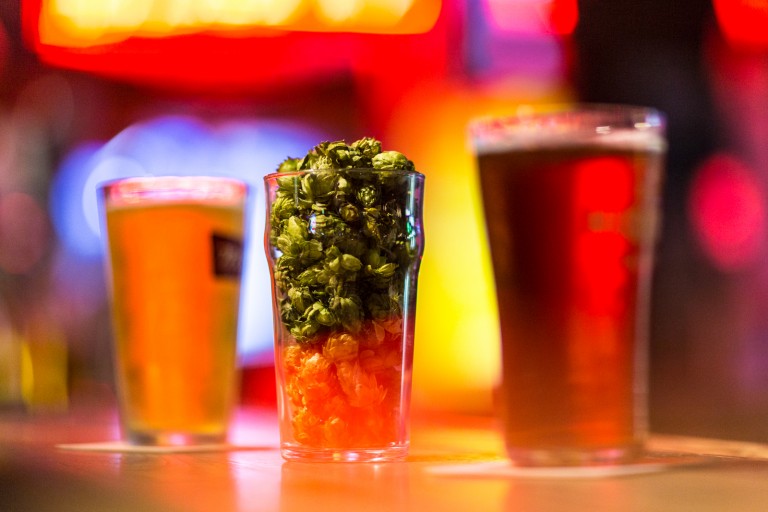Jon Spee
CONTRIBUTOR
Matt Smith
PHOTO EDITOR
This past weekend was beer-filled, but not in the sitting-around-doing-nothing-but-drinking sense. It started Friday night with a “homebrew-off,” a friendly competition hosted by a good friend of mine. We had eight different harvest themed homebrews to sample and vote on. That was followed with Saturday’s Brew Day in uptown Waterloo, where a good number of very tasty local and regional beers were available. On Sunday I hosted a homebrew workshop at the Harvest Home Festival at the Wellington County Museum and Archives.
After so much tasting, comparing, evaluating, discussing, and enjoying I was left with a few new thoughts bouncing around my head. But my main question is, when will local beer go local?
Brewing developed over the past several thousand years. However, beer that we would actually recognize is more recent, having evolved in breweries all over Europe over the past few centuries. For most of its evolution, one main factor influenced what was possible—locale.
Historically, brewers had to work with what they had. Since beer begins with water and its chemistry plays a rather large role in the outcome of the mashing process, this had a huge effect on regional styles. Mashing is the heating up of a mixture of water and milled grains, usually barley, to create a sugary liquid called wort.
After water, the solid ingredients determine what sort of beer can be made. These days it’s mostly barley and hops, but this wasn’t always the case.
Over the years, different brewing regions developed different types of malts and hops, as well as ways of processing those ingredients.
Finally, fermentation was determined by the available yeast, which was generally saved from batch to batch. The deliberate selection of yeast over generations led to today’s great diversity of yeasts, and their accompanying styles of beers.
These days, modern craft brewers pair the knowledge and wisdom of brewing history with a good understanding of chemistry and biochemistry to brew pretty much any beer style they want. This has obvious benefits for beer drinkers, who get to try beer from all over the world, brewed in their back yards.
However, that freedom means that no brewer anywhere is forced to work hard to develop their own true regional style.
I love to think about what it would look like to work within the confines of local—by using only local unaltered water, local malt and grains, local hops, local yeast, and any other possible local ingredients—to create a style that is true to our region and climate.
Many Ontario breweries are already incorporating local hops into their beers, and a few brave ones are using local malts, which have a long way to go before they can match the quality and consistency of those from the Prairie Provinces and Europe.
In the meantime it is up to beer lovers to continue supporting local craft breweries, and to ask the brewers what exactly makes their beer “local.” In time, maybe Ontario will be home to its own unique beer style.

